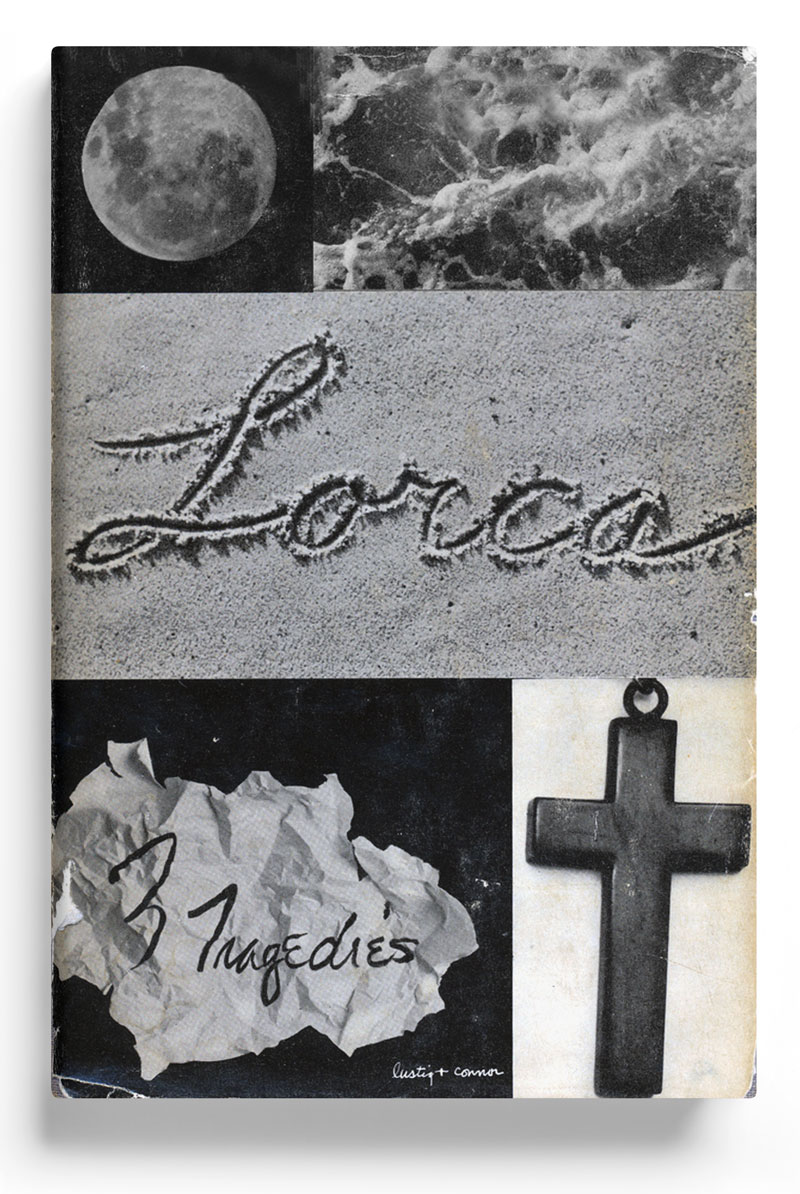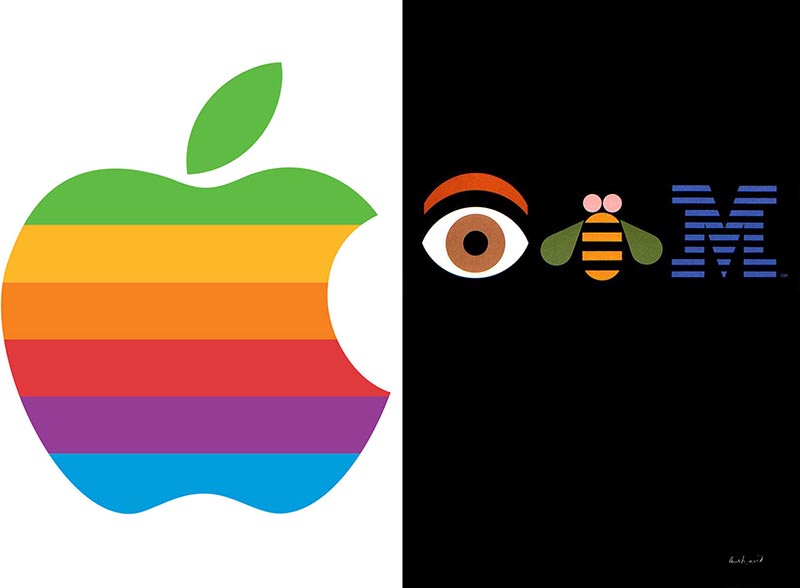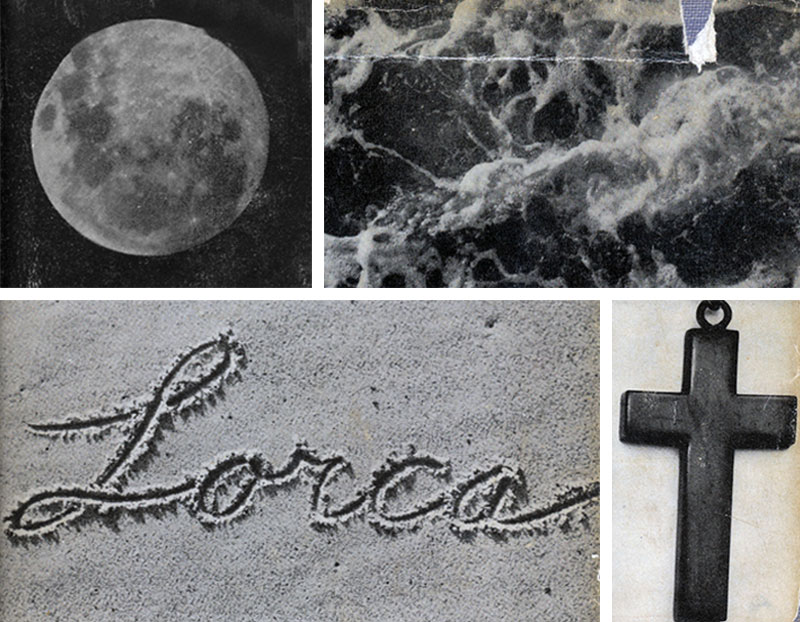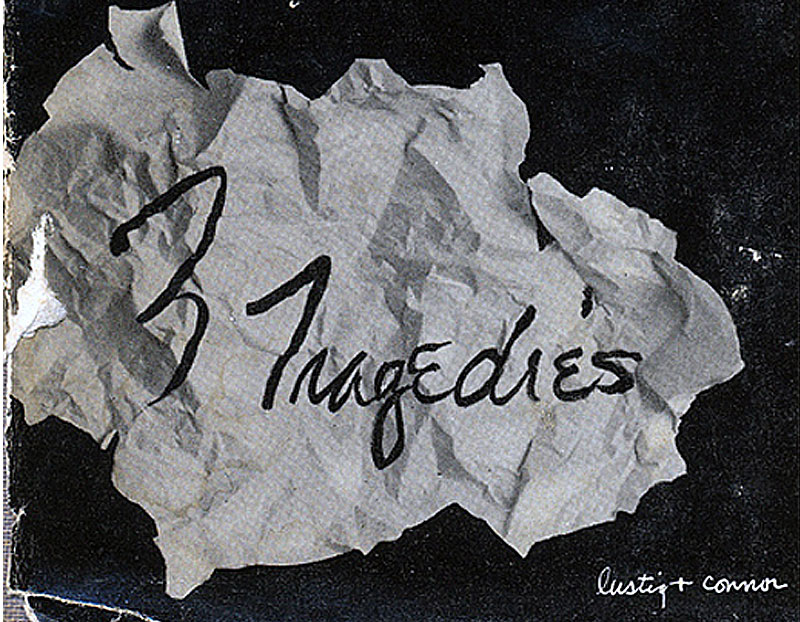
3 Tragedies book cover. Federico García Lorca, author, Alvin Lustig, designer; J. Connor, photographer, 1948
"We tell ourselves stories to live," Joan Didion wrote in her essay, “The White Album." Didion's statement talks about our need to assign meaning through narrative. We pass through our days creating fictions to make sense of the world. The surly man in the meeting had a fight with his wife at home. The woman on the corner with the teacup poodle and Hermés Birkin bag lives a life of leisure but is lonely. Creating small narratives that we consistently prove or disprove creates our reality. Alvin Lustig’s cover for 3 Tragedies (1948) takes this human need for meaning and asks us to solve, not one simple story, but a complex and personal piece of poetry.

Alvin Lustig
Lustig’s approach is related to the legacy of the Bauhaus, shifting design from the artistic to the functional. Walter Gropius and most of the other Masters at the Bauhaus, believed that rather than being a lesser form of fine art, design in all forms aligns with science, research, and engineering. A poster is a machine for information. The teapot could be aesthetically pleasing, but its priority was the function. Form follows function is one of the tenets we consider a given in design today. While we recognize the unquantifiable creative aspects, we also rely on research and technology to reach a satisfactory solution.
As designers, our use of symbolism, iconography, and meaning is based on Freudian theory, derived from an analytic and rational process to research human psychology. Sigmund Freud’s legacy to design is a set of beliefs that we utilize when we choose images, words, color, shape, and typography to form a communication. Tenets of Freudian theory shaped Lustig’s approach to design over the arc of his career:
1. The unconscious influences how we behave and shapes our identity.
2. Truth exists below the surface, revealed through abstract symbols and actions.
3. Each person has his or her truth based on personal life experience.
4. Dreams reveal meaning through symbols, not the actual object or person in a dream. A cigar may not be a cigar.
5. Understanding the meaning of a symbol is a valuable and necessary achievement.
The Apple logo, with associated concepts from knowledge to the "byte," is an obvious example of this connection. The sign is a piece of edible fruit. The signified is the meaning it represents to each of us personally. Paul Rand's poster for IBM (1981) is an iconographic representation of the eye, a bee, and IBM logo "M." But it also talks about vision, foresight, industriousness, and community. The fundamental belief that our audience reads symbols is at the core of modern graphic design.

LEFT: Apple logo. Rob Janoff, 1976. RIGHT: IBM poster. Paul Rand, 1981.
Surrealism originated in the early twentieth-century as an expression of Freud and Jungian theory. Salvador Dalí, René Magritte, and Max Ernst painted personal dream imagery that would, in theory, reveal a truth. By the 1930s, graphic designers Alexey Brodovitch, A.M. Cassandré, and Herbert Matter introduced surrealism to the mainstream audience with magazine covers for Harper’s Bazaar and Vogue. Lustig's 3 Tragedies cover transcends the concept of dream imagery and presents multiple narratives.

Harper’s Bazaar: Alexey Brodovitch, A.M. Cassandré, Herbert Matter

3 Tragedies details
Rather than presenting the viewer with a central and singular symbol to represent a tragedy, for example, a tombstone, Lustig forces the viewer to create his or her narrative with images. Each image has multiple meanings. None are explicit. They all exist in the Surrealist and Freudian dreamscape. The moon can serve as a symbol for the feminine, romance, mystery, and lunacy. The sea, driven tidally by the moon, has traditionally represented impassible barriers, sexuality, undercurrents of emotion, and loneliness. Writing in the sand is an explicit reference to the passing of time, and the transitory and impermanent. It also speaks to the physical and personal action of drawing letters at the beach. The cross is the most potent of symbols here. With its multiple associations, it can symbolize sacrifice, belief, and in this image of a cross on a wall, domesticity.

3 Tragedies detail
The image that carries the most weight, narratively, is the crumpled paper with the title. The viewer cannot see this without creating a story line to explain the state of the note. How was it wrinkled? Who crumpled it and why? Was it retrieved from a trash can or on the floor? In every instance, the raw action of tearing the paper and then unfolding it is implicit. And, like the title, most narratives involving crumpled paper with handwriting are not cheerful.
Lustig’s approach matches the content of Lorca’s three plays here, Blood Wedding, Yerma, and The House of Bernarda Alba: violence, loss, tragedy, and forms of love. The result of the complexity of images forces the viewer to deconstruct the meaning and attempt to create a consistent communication. The genius here is Lustig's resistance to present a straightforward and singular symbol, easy to digest. To do so would minimize Lorca's work as simple and literal. Allowing the viewer the opportunity to generate personal meaning forms a connection and adds mnemonic value. It is the difference between a greeting card birthday wish and dense poem.
